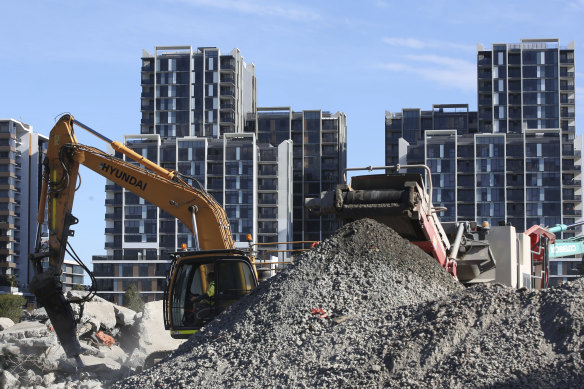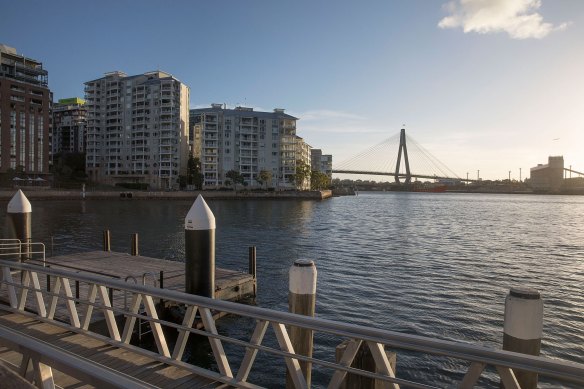This was published 1 year ago
Councils bid to stop state power grab over large residential developments
NSW councils have questioned a number of state government proposals to increase the supply of cheaper homes, including a special state-led approval process for large residential developments that contain at least 20 per cent affordable housing.
Under a raft of planned changes to the State Environmental Planning Policy (SEPP) on housing, residential projects would be deemed state significant developments if they have a capital investment value of more than $100 million and a fifth of their gross floor area is social or affordable housing.

LGNSW said the expansion of “state-significant developments” was designed to bypass local governments and residents.Credit: James Alcock
That would give the Minister for Planning or the Independent Planning Commission the power to approve or reject such proposals, bypassing local and regional planning panels.
In a formal submission to the Planning Department, the peak body for councils, Local Government NSW (LGNSW), said it opposed the move because it took power away from councils and residents.
“Councils continue to raise concerns about the expansion of state significant development in the planning system,” LGNSW said.
“While it is important to provide for more social and affordable housing ... this should not be at the expense of local amenity and site conditions.
“Many of the proposed amendments exclude or bypass councils and may have significant and long-term impacts for local areas, particularly where large scale, precinct-wide developments are proposed.”
LGNSW said if the scheme proceeded, the affordable housing hurdle should be increased to 25 per cent, and the homes should have to remain affordable forever rather than being returned to market rates after 15 years, as is currently proposed.
The City of Sydney local government area would be excluded from the scheme – any development applications in that area would continue to be assessed by the council and determined by the Central Sydney Planning Committee.
Other proposed changes to the housing SEPP include boosting the floor-space-ratio bonus for developers who include an affordable housing component.
For example, if a developer proposes a building with 30 per cent affordable housing, they would be entitled to 15 per cent more floor space than normal, up to a maximum of 25 per cent if a building is 50 per cent affordable housing.

The new scheme will not apply to City of Sydney local government area.Credit: Michele Mossop
LGNSW did not explicitly oppose this measure but said it should not be implemented until separate reforms to the Standard Instrument Local Environment Plan were dealt with, which could also help developers realise floor-space-ratio bonuses.
“Councils recognise the need for affordable housing, however many councils are concerned
when one-size-fits-all development controls, such as the proposed floor-space bonuses, override local provisions,” the peak body said.
It also said that if the measure went ahead, affordable housing realised under this bonus should remain affordable in perpetuity instead of 15 years.
The proposed SEPP changes contain other measures for group homes, supported accommodation, boarding houses, seniors’ homes and social housing, and are on public exhibition until January 13.
The government said the changes were necessary for NSW to meet its housing needs.
“Revision of the [floor-space-ratio] bonuses will make it more financially attractive for smaller proposals to access an incentive and deliver affordable housing in local communities,” the department said.
“The proposed changes will also offer larger-scale residential projects more flexibility to deliver affordable housing in their residential developments by improving feasibility outcomes.”
Documents prepared by the Department of Planning advised that under the new scheme, state significant residential developments would also be referred to the State Design Review Panel for evaluation and advice on design quality.
The Morning Edition newsletter is our guide to the day’s most important and interesting stories, analysis and insights. Sign up here.